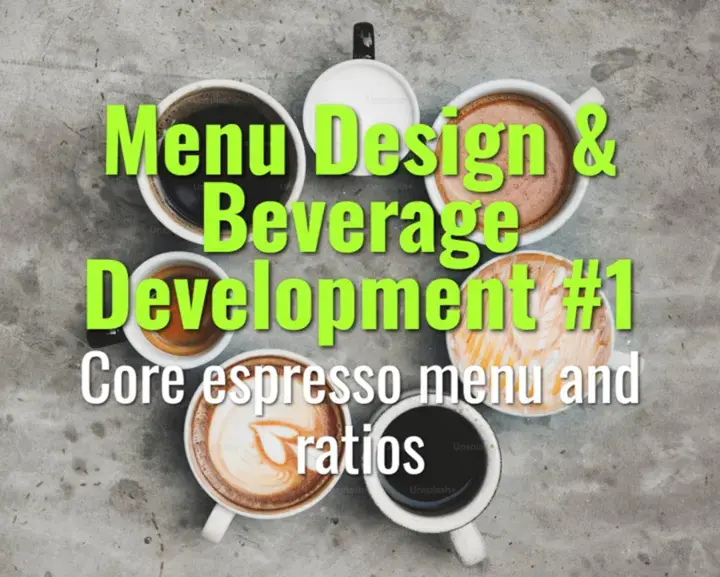Core espresso menu and ratios
The foundational espresso-based drinks, their traditional ratios, and how they define customer expectations across cafés worldwide.
- Coffee Basics Nerds
- 2 min read
Article 1 of 12 in Menu Design & Beverage Development/

Why Ratios Matter
- Espresso drinks differ not just in size but in espresso-to-milk-to-foam ratio.
- Ratios affect strength, mouthfeel, and flavor balance.
- Consistency ensures customer satisfaction and repeatability.
Core Espresso Menu
Espresso
- Ratio: 1:2 (dose : yield).
- Example: 18 g dose → 36 g espresso (~25–30 sec).
- Profile: Intense, concentrated, crema-topped.
Ristretto
- Ratio: 1:1 to 1:1.5.
- Profile: Shorter, syrupy, higher intensity, sweeter balance.
Lungo
- Ratio: 1:3 to 1:4.
- Profile: Longer, lighter, more bitter, diluted body.
Macchiato
- Espresso with a dash of foam or milk (~10–20 ml).
- Coffee-forward, softened edges.
Cortado / Gibraltar
- Ratio: 1:1 espresso : milk (~30–60 ml each).
- Smooth balance, retains coffee intensity.
Cappuccino
- Classic: 1:1:1 (espresso : milk : foam).
- ~150 ml total volume.
- Balanced flavor, distinct foam cap.
Flat White
- Double espresso with thin layer of microfoam (~120–160 ml).
- Stronger coffee presence, silky texture.
Latte
- Ratio: 1:3 to 1:6 espresso : milk.
- ~240–300 ml.
- Milk-dominant, creamy, gentle coffee notes.
Mocha
- Latte with added chocolate (syrup or powder).
- Sweet, indulgent, dessert-like.
Practical Notes
- Regional variations exist (e.g., cappuccinos drier in Italy vs creamier elsewhere).
- Serve sizes differ by market, but ratios should stay consistent.
- Training staff on ratios ensures uniformity across baristas.
Summary
The core espresso menu is defined by ratios of espresso to milk and foam. From intense ristrettos to milk-heavy lattes, mastering these proportions allows cafés to serve drinks consistently and meet global customer expectations.